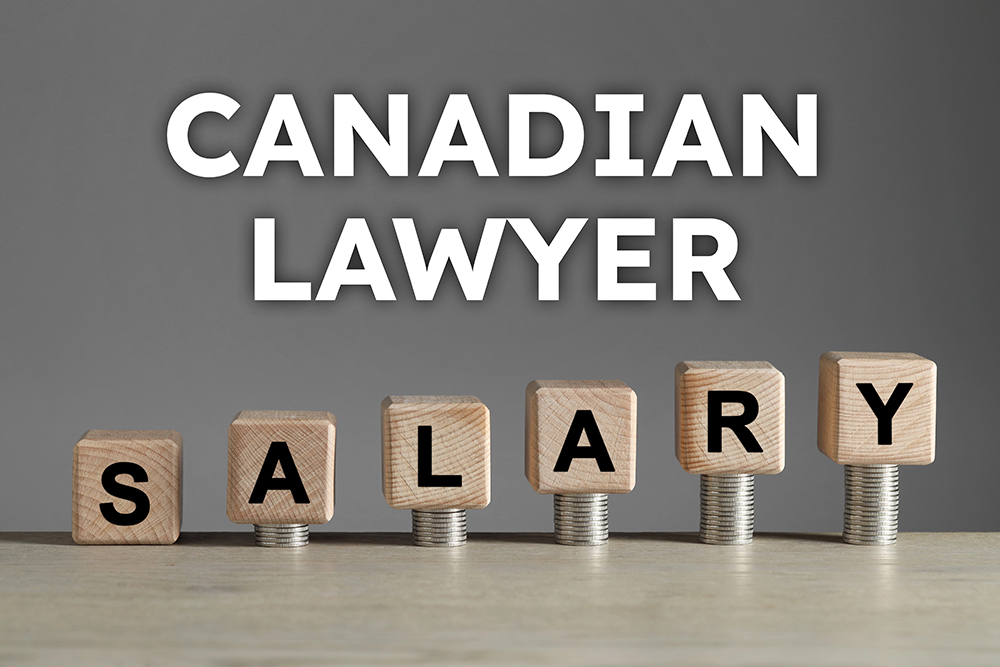Assault Causing Bodily Harm (s. 267(b)) Laws in Canada
What is assault causing bodily harm?

Assault causing bodily harm is a mid-range assault offence. This means that assault causing bodily harm is more serious than common assault, however, it is not as serious an aggravated assault offence. What constitutes “bodily harm” is considered to be an injury that is trivial and non-transitory.
Assault causing bodily harm is a hybrid offence. This means that depending on the circumstances of your case and whether there are any aggravating or mitigating factors present, the Crown can proceed either by indictment or summarily.
Examples
Some common examples of assault causing bodily harm may include the following:
- Giving someone a broken arm;
- Any injury that requires immediate hospital care;
- Leaving a bruise on someone’s face; and
- Causing someone psychological trauma.
Defences
A strong defence to an assault causing bodily harm will depend heavily on the individual circumstances of your case.
However, some common defences used against an assault causing bodily harm charge may be as follows:
- Identity;
- No assault;
- No bodily harm;
- De minimus;
- Reflex;
- Consensual fight;
- Self- defence;
- Defence of another;
- Defence of Property; or
- Any applicable Charter
Punishments
Assault causing bodily harm is a hybrid offence in which the Crown may proceed by indictment or summarily, depending on the circumstances of your case.
The following penalties may be applicable if you are convicted of assault causing bodily harm:
- Indictment: up to 10 years in jail.
- Summary: up to two years less a day in jail and/ or a $5,000.00 fine.
Overview of the Offence
Under s.267 of the Criminal Code:
Every person is guilty of an indictable offence and liable to imprisonment for a term of not more than 10 years or is guilty of an offence punishable on summary conviction who, in committing an assault,
(a) carries, uses or threatens to use a weapon or an imitation thereof,
(b) causes bodily harm to the complainant, or
(c) chokes, suffocates or strangles the complainant.
For the purposes of assault causing bodily harm, assault is defined in s.265 of the Criminal Code, which states that a person commits an assault when:
(a) without the consent of another person, he applies force intentionally to that other person, directly or indirectly;
(b) he attempts or threatens, by an act or a gesture, to apply force to another person, if he has, or causes that other person to believe on reasonable grounds that he has, present ability to effect his purpose; or
(c) while openly wearing or carrying a weapon or an imitation thereof, he accosts or impedes another person or begs.
Under s.265 (2) of the Criminal Code, this definition of assault is explicitly applied to all forms of assault. As such, in order for the Crown to secure a conviction for an assault causing bodily harm, it first must be proven that an assault occurred by meeting the definition of assault provided for in s.265 of the Criminal Code.
Once it has been satisfied that an assault has taken place, the Crown must prove the essential elements of an assault causing bodily harm. The Crown must prove both the actus reus, the mens reus, and causation to secure a conviction of assault causing bodily harm.
The Guilty Act (Actus Reus)
The actus reus that the Crown must prove, beyond a reasonable doubt, is that you:
- Caused bodily harm to the complainant
Under s.2 of the Criminal Code bodily harm has been defined “as any hurt or injury to a person that interferes with the health or comfort of the person and that is more than merely transient or trifling in nature.”
The case of R v Dixon, 1998 CanLII 805 (SCC) discussed what the definition of bodily harm constitutes. The court, in this case, considered that the words “transient or trifling in nature” imports a very short period of time and an injury of a very minor degree which results in a very minor degree of distress. Additionally, it is not necessary that bodily harm meets the standard of interfering in a grave or substantial way with the physical integrity or well-being of the complainant. This means that functional impairment is not necessary for you to be convicted of assault causing bodily harm. Rather, a mere interference with comfort will be sufficient to constitute bodily harm if it is trifling and transient in nature. This was discussed in the case of R v Moquin, 2010 MBCA 22 (CanLII).
The Guilty Mind (Mens Rea)
The men’s rea that the Crown must prove, beyond a reasonable doubt, is that you had:
- Objective foreseeability of the risk of bodily harm
Assault causing bodily harm is a general intent offence. This means that you do not have to intend the consequence of your actions, and in situations where you were reckless, whether the act caused bodily harm will be sufficient to meet the mens rea element. This is because, for assault causing bodily harm, the mens rea requires that there was objective foreseeability of harm that would result from the assault. This means the courts will have to consider whether a reasonable person in your shoes would have known that their actions would have caused harm. However, there is no requirement to establish the risk of the specific type of harm that occurred.
Additionally, it is important to note that the doctrine of transferred allows the intent to assault one person to satisfy the mens rea for an assault against another person where that second person was not the target. This means that the intention of a failed assault can successfully transfer to the assault of another person.
Causation
In addition to the essential elements of assault causing bodily harm, the Crown also bears the burden to prove causation in assault done by you caused the bodily harm that was inflicted by you onto the victim. As indicated in the case of R v Smithers, 1977 CanLII 7 (SCC) the Crown must satisfy the court that the act you committed was a “contributing cause…outside the de minimus range”. What this means is that your action needs to be the contributing cause of the bodily harm and jot just a minimal or insignificant cause.
Defences
A strong defence will depend on the circumstances of your offence and the evidence against you.
However, the following defences may be raised when dealing with an aggravated assault charge:
- Identity;
- Self- defence;
- Defence of another;
- Reflex;
- De minimus;
- Defence of Property; and/or
- Any applicable Charter defences
Identity
Depending on the circumstances of your case, you may be to raise an identity defence. Often, false accusations of assault causing bodily harm can occur, and the wrong person is charged as a result. For example, in some cases, the complainant may not be able to clearly identify the perpetrator and end up accusing the wrong person, or the authorities may have made a mistake in identifying you as the perpetrator. This would be a case of mistaken identity. In order for this defence to be raised successfully, you will have to prove that you were not present at the time of the offence. This can be done by corroborating evidence, such as an alibi, to remove you from the time of the offence
Self-Defence
In certain situations, it is acceptable to respond to force, or threats of force, with force. This is what is called self-defence. To successfully argue self-defence, it must be proven, on a balance of probabilities, that there is an “air of reality” to your claim, that you subjectively believed on reasonable grounds that force, or a force of threat, was being used against you, your conduct had a defensive purpose, and your conduct was objectively reasonable in the circumstances. If you successfully raise a defence of self-defence it will serve as a justification for your conduct, and you will be acquitted.
Defence of Another
If you were in a situation where you responded to a force or the threat of force with force to to defend someone else against an unlawful attack, provided there was no intent to cause death or grievous bodily harm, you may be able to rely on the defence of another. If raised successfully, this defence acts as a full defence which means that it serves as a justification for your conduct, and you will be acquitted.
Reflex Action
Reflex actions are involuntary physical actions which result because of some external source. In order to be convicted of aggravated assault, the Crown needs to prove both the actus reus and the mens rea of the offence. An involuntary act, such as a reflexive action, would negate the requisite intent that would be required for a Crown to secure an assault causing bodily harm conviction. In order to raise this defence successfully, it must be showcased that the accused’s act was an involuntary response over which the accused has no control and would be considered akin to an automatic response to nerve stimulation.
De Minimis
The principle of de minimus non curat lex roughly translates to the “law does concern itself with trifles.” As such, this defence excludes certain acts from criminal sanction. If you are able to showcase that your act was de minimis, you may be acquitted. However, it is important to note that the courts have indicated that there is a limited societal interest in applying this defence to offences of violence.
Defence of Property
You may also be able to raise the defence of property found under s.35 of the Criminal Code against an assault causing bodily harm charge. This defence typically arises when an individual’s peaceful possession of property is threatened or someone is trying to take damage or trespass on your property. Given that the force that you used against the threat of force or the force was reasonable, you may be able to successfully raise this defence. However, in practice, this defence is seldomly raised.
Applicable Charter Defences
The Charter sets out your rights and freedoms before and after your arrest. If the police fail to abide by these rights, either deliberately or inadvertently, it could aid in your defence. If any of your Charter rights have been violated before or after your arrest, you may be able to have some or all of the evidence that the Crown is relying on to secure a conviction excluded under s.24(2) of the Charter.
Assault Causing Bodily Harm Punishment
The penalty that you receive for a conviction of assault causing bodily harm is dependent on whether the Crown elected to proceed by indictment or summarily and if there are any aggravating or mitigating factors present. The following penalties may be applicable if you are convicted of assault causing bodily harm:
s.267 – Indictment
If you are convicted of assault causing bodily harm and the Crown proceeded by indictment you may face up to 10 years in jail.
You will also have available to you a discharge, suspended sentence, fine alone, fine and probation, prison and fine, intermittent sentence, and fine probation and intermittent sentence. Note you do not have available to you a conditional sentence.
s.267 – Summary
If you are convicted of assault causing bodily harm and the Crown proceeded summarily you may face up to two years less a day in jail and/or a $5,000.00 fine.
You will also have available to you a discharge, suspended sentence, fine alone, fine and probation, prison and fine, intermittent sentence, and fine probation and intermittent sentence and a conditional sentence.
Some aggravating factors that may increase the likelihood of jail time are if:
- The offence was committed in a domestic situation;
- The offence was committed while out on bail;
- The offence was committed for the benefit of, in association with, or at the direction of a criminal organization;
- The offence involved the use of a prohibited firearm; or
- You are not a resident of Canada.
Additionally, if convicted, you will receive a criminal record which can also have negative impacts on your future, such as when it comes to employment, housing or immigration consequences.
Frequently Asked Questions
How serious is assault causing bodily harm?
Assault causing bodily harm is a serious offence in Canada that is prosecuted harshly. Even for a first offence, you may receive significant jail time.
What is the minimum sentence for assault causing bodily harm in Canada?
There is no minimum sentence for assault causing bodily harm in Canada.
However, there are maximum sentences that you may receive as follows:
- Indictment: up to 10 years in jail.
- Summary: up to two years less a day in jail and/ or a $5,000.00 fine.
What type of offence is assault causing bodily harm?
Assault causing bodily harm is a hybrid offence. This means that depending on the circumstances of your case, the Crown can elect to proceed by indictment or summarily.
Published Decisions
R. v. Gunter, 2022 ONSC 5748 (CanLII)
In this case, the accused died at his home shortly after an altercation with his son, the accused. The accused was charged with manslaughter, assault, causing bodily harm and a breach of probation. The court found the accused not guilty of all the charges.
You can read the full decision here.
R. v TB, 2021 ABCA 17 (CanLII)
In this case, the accused and an accomplice assaulted a homeless person, without provocation, and sprayed him with bear spray. The accused and the accomplice then returned back twice with other individuals and proceeded to assault the homeless man again. The accused was charged and convicted of assault causing bodily harm and received a 6-month sentence. The accused appealed this sentence; however, the appeal was overturned.
You can read the full decision here.
R. v. O’Loughlin, 2017 ONCA 89 (CanLII)
This is an appeal case where the accused appealed his conviction of assault causing bodily harm. The accused was found guilty as a participant in the unlawful assault of a fellow inmate which suffered bodily harm such as multiple rib fractures, damaged teeth, bruising and cuts. The accused was sentenced to 191 days imprisonment. The court granted leave to appeal the sentence but dismissed the appeal from the sentence.
You can read the full decision here.
About The Author







